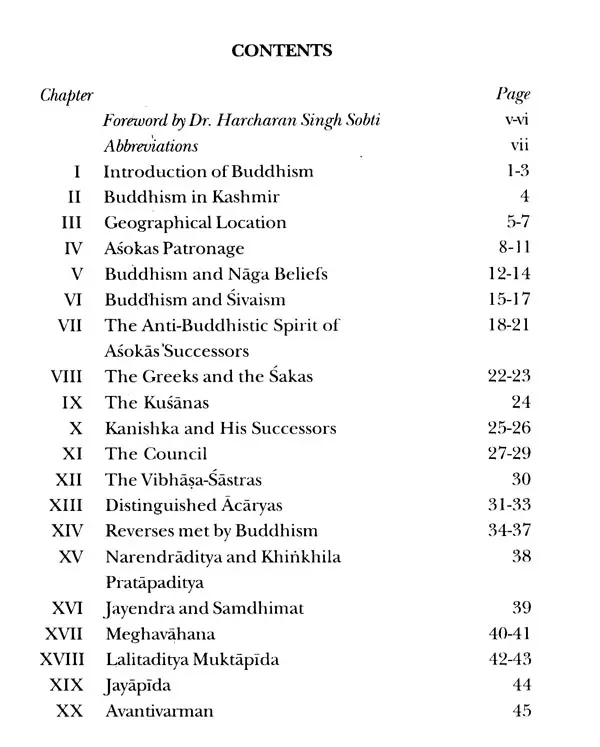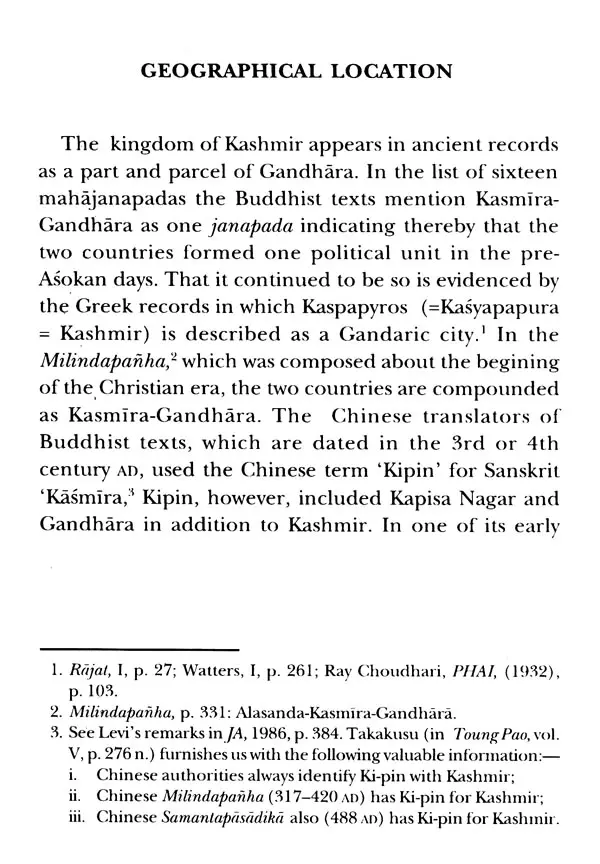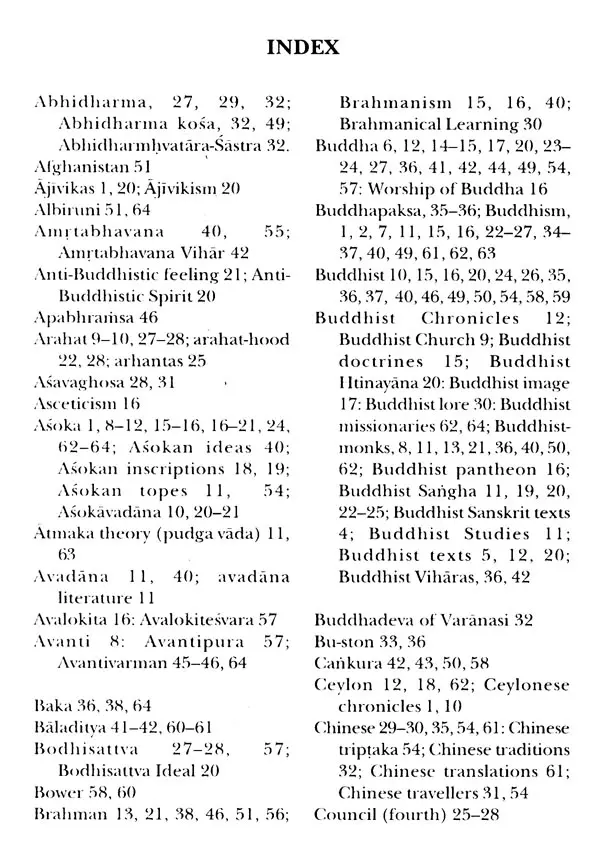
Buddhism in Kashmir
Book Specification
| Item Code: | UAI244 |
| Author: | Nalinaksha Dutt and Harcharan Singh Sobti |
| Publisher: | Eastern Book Linkers |
| Language: | English |
| Edition: | 2017 |
| ISBN: | 9788178543260 |
| Pages: | 74 |
| Cover: | HARDCOVER |
| Other Details | 9.00 X 6.00 inch |
| Weight | 220 gm |
Book Description
The book in hand is concerned with Indian Buddhism. The Buddha's own Caritas and that of the Elders did help in spreading the Dhamma, latter on called Buddhism, among the contemporary inhabitants of India, contemporaneously known as [ambudip. The Wheel of the Dhamma or Dhamma Cakka once set on rolling at Saranath, by the Buddha himself ceaselessly continued to move on conqueing the hearts and the minds of the people. Indian Buddhism is equally rich with regional variations, at home. The Wheel moved into Kashmir, a cradle of Sanskrit Buddhism. The present book throws light on the history of Buddhism in Kashmir during the period, commencing from the reign of Asoka up to the 12th century AD. The book, in short, deals with the 'good and bad' days in the life- history of Buddhism. The most remarkable thing that the book has to reveal for us is "the harmonious existence of Buddhism and Sivaism side by side without acrimonies and persecutions." (p. 63). This process of effecting harmony among different religious sects was initiated and put into day to day practices by none other than the kings themselves. The kings not only erected temples to venerate Siva Buddha and Vi, 5’~tu but also allowed their queens and ministers to express freely their adoration for the deities of their heartfelt choice. And, an interaction, here too, among these three was invitee. These gestures from the top, in fact, go long way to establish religious tolerance (not in toleration) giving way to harmonious living among the people belonging to different ethnic groups.
This book on history of Buddhism is, besides other things, undoubtedly, of historical significance at the time of crisis in the life of Indian people.
Majjhantika was deputed to Kasmira-Candhara. About the time of his arrival there Aravala," king of the Nagas, was destroying the ripe corns of the country by hail- storm. Majjhantika, on account of his miraculous powers, stood on the surface of the Aravala lake unaffected by rain and storm. At this the aga king grew furious and sent forth storm and lightning’s, and hurled stones and rocks at him but without any effect.
Thus convinced of Majjhantika's great powers, the aga king with his followers submitted to him and listened to his discourses on the evils of anger and hatred. Pandaka Yakkha and Harita Yakkhini with their 500 children became his devotees and offered a jewel throne. When they were fanning him the residents of Kasmira-Candhara came with their offerings for the Nagas, but they offered the same to Majjhantika who then delivered to them a discourse on asioisa (venom of a serpent) and converted them to Buddhism. From that day up to the time of composition of the Mdhauamsa, i.e., the fifth century AD, the author says that Kasmira-Gandhara continued to be illumined by yellow robes.
A legend similar to the above appears with slight variations in the Tibetan Dulva and the traditions derived from it, e.g., in the works of Taranatha. Boston, Asokauadana, and in Yuan Chwang 's Records. The story runs as follows: Madhyan tika, a disciple of Ananda, was a teacher of Varanasi. His pupils were so numerous that the lay-devotees of Varanasi found it difficult to maintain them; so Madhyantika left the town for Mount Usira in the north,' where he stopped for three years. After this period Madhyantika went to Kashmir and settled down, on the bank of a lake inhabited by the Nagas." His presence was resented by the Nagas, who however were .subdued by his supernatural powers.
Book's Contents and Sample Pages














